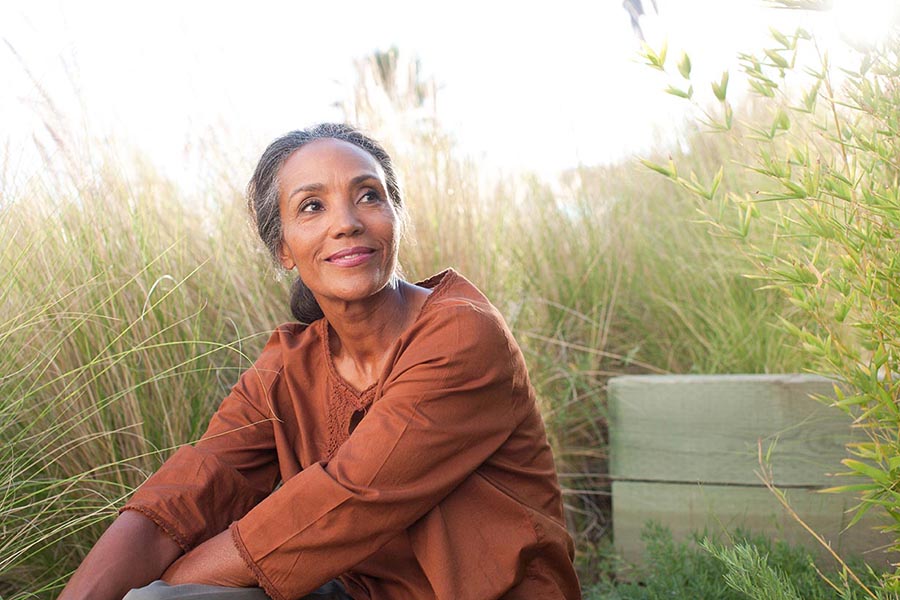
When Michael Parsons, a certified nurse practitioner who specializes in the treatment of spine-related ailments at East Falls Clinic, began seeing patients more than a decade ago, he spotted a trend. He noticed elderly patients would receive treatment for compression fractures in their spine only to come back a few months later with a new compression fracture in a different spot along the spine.
“It didn’t take long to realize that not only was osteoporosis being underdiagnosed, but it was also being undertreated or not being treated at all,” Parsons said. “That’s why I make osteoporosis a daily conversation with my patients. Although most people are familiar with the condition, they often don’t recognize that their injuries are linked to the disease.”
For example, a female patient in her mid-70s came to see Parsons after breaking a bone a month for three months. Parsons not only helped diagnose her osteoporosis, but he also developed a treatment plan that centered on physical therapy and education.
“She was at a point where her health and life could have gone either way – she could have become immobile or gotten stronger. I’m happy to say that today, she’s more active and in a better state of health than when she originally came to see me,” Parsons said.
Am I at risk for osteoporosis?
Research shows that one in two women older than 50 will fracture a bone related to osteoporosis, and one in four men older than 50 will experience a bone fracture related to osteoporosis.
Several risk factors increase the likelihood that an individual will develop the bone disease – including age, race, medical family history and lifestyle choices (like consuming too much alcohol or not getting enough weight bearing exercise). Also, certain medical conditions and treatments can increase the risks of osteoporosis. For example, celiac disease hinders absorption of adequate calcium, and individuals undergoing breast or prostate cancer treatments may receive medications that fight cancer but hurt bone growth.
In addition to demographics, lifestyles and circumstances, Parsons says an adult’s past plays a major role in a senior’s bone density.
“Your bone density was largely determined by your early- to mid-20s. The amount of calcium absorbed and the amount of weight bearing exercises in our youth influence the building of our bones for the future,” Parsons explained. “As we see Baby Boomers coming forward, we recognize that times were different in their youth, and we didn’t understand as much as we do now – but there are still things we can do right now to help strengthen our bones against osteoporosis.”
How can I prevent osteoporosis?
For individuals 50 years and older who haven’t broken a bone yet, Parsons recommended three essential action items to help prevent osteoporosis.
“First, every day you should take calcium and vitamin D3 supplements. Take both because vitamin D3 is the key that unlocks the door for calcium to get into the bone. The typical dose is 500 mg of calcium and 400 IUs of Vitamin D3 per day,” Parsons said.
The second recommendation also focused on daily action.
“I can’t stress weight bearing exercise enough. People always ask me what weight bearing exercise is – it’s any movement that works against gravity. It can be as simple as going for a walk, or you could join a dancing group. Weight bearing exercise signals to the bone that it needs to stay strong, and the body responds well to those signals,” Parsons said.
Lastly, Parsons emphasized bone density screening tests for any woman 65 years or older, any man 70 years and older, and anyone who has broken a bone since age 50.
“Find out what your bone density is. It can serve as a base line, indicate a need to start treatments or can lead to further understanding about how to have a better quality of life,” Parsons said. “At East Falls Clinic, we make sure patients understand not just what the treatments are, but what the problem is and the basic physiology of what’s going on … The last thing I say to every patient I see is, ‘If you have a question, please pick up the phone and call me.’ I hope they know that I mean it. We’re here to help.”
If you have a question related to osteoporosis, please call East Falls Clinic at (208) 535-4400 to schedule a consultation with Michael Parsons or one of his colleagues.
$webqFacilityNumber
Need a Physician?